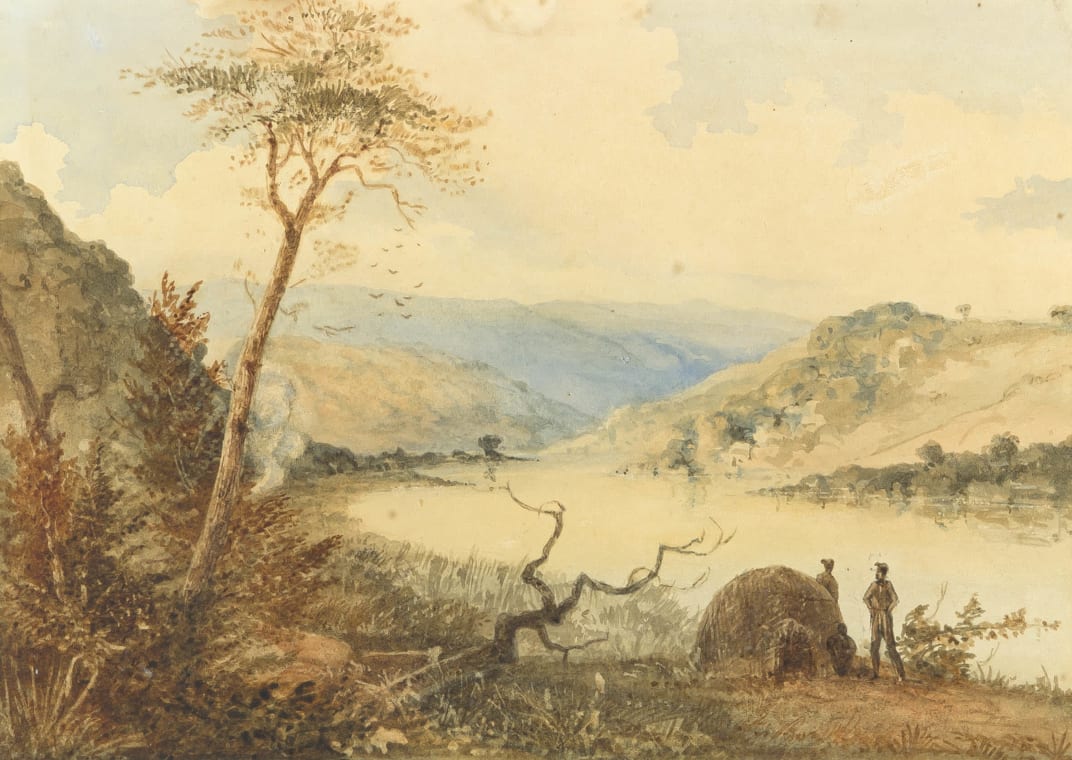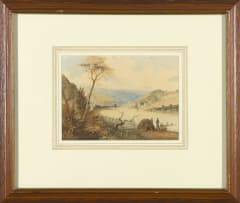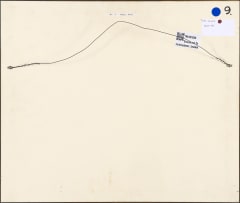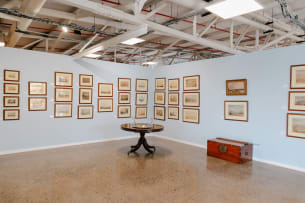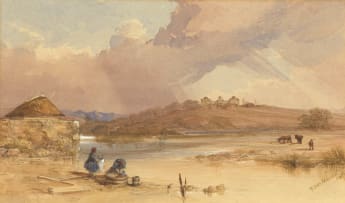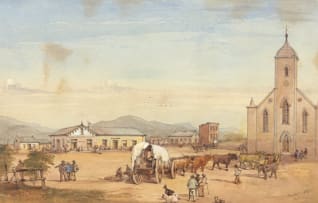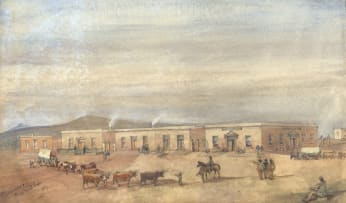Umgani, Natal (sic)
Thomas Bowler
About the SessionThomas Bowler, a largely self-taught painter, was born in England. He spent the bulk of his adult life at the Cape of Good Hope where he drew and painted seascapes and the Cape landscape, whilst depicting historical events of the time. Many of his paintings were reproduced as lithographs, available on a subscription basis in England. Bowler’s works were extensively published as illustrations in books and magazines, fulfilling the role of the modern-day photojournalist.
Please join Strauss & Co this Art Club in Cape Town for a talk facilitated by specialist Kayleen Wrigley on the early landscape painter, Thomas Bowler. Travelling Recollections: Journeying around the Cape through the lens of Thomas Bowler Tuesday, 5 March 2024 5:30 for 6:00pmm35 Brickfield Road, Woodstock, Cape Town.
RSVP HERE: https://zurl.co/zPsT
Incl. Buyer's Premium & VAT
About this Item
signed
Notes
Strauss & Co's online auction this March features a single artist session focusing exclusively on 19th-century British artist and landscape painter Thomas Bowler. This is a once-in-a-lifetime opportunity for collectors to acquire pieces directly from a collection curated by Dr. Frank Bradlow, Bowler's biographer and a luminary in Africana collectables.
Focus on Thomas Bowler
All 46 lots in the single-artist session hails from a recently deaccessioned private corporate collection - the world's second-largest collection of Bowler's work, only surpassed by the William Fehr collection at Iziko.
Among the highlights is a rare oil painting depicting Table Bay, alongside remarkable watercolours showcasing life in 19th century Cape of Good Hope and other parts of South Africa.
After arriving in Cape Town in 1834, Thomas Bowler spent his career documenting the Cape Colony. He painted both its landscapes and the lives of its inhabitants. His work also captures the early development of Port Elizabeth and scenes from his travels during a period of conflict between the Dutch and the British as they expanded into territories defended by the indigenous population.
In 1965, Bradlow suggested placing a plaque on the Wale Street building where Bowler once lived, which was then the offices of a financial services company.
"With the assistance of Dr. Mathys Bokhorst from the National Gallery and Bradlow, the company secured additional works by Bowler. Bradlow then took on the role of curator for the collection in 1967. Through his efforts, it became the country's second-largest holding of Bowler's art, surpassed only by the William Fehr collection at the Iziko Museums, encompassing paintings and other objects from the 17th to 19th centuries," says Kayleen Wrigley, Strauss & Co Valuation Specialist.
A captivating landscape oil painting reminiscent of British Romantic painter J.M.W. Turner is up for auction. This atmospheric piece depicts Table Mountain and Table Bay and is the highest-valued lot in the second session.
"Oil paintings by Bowler are exceedingly rare. He worked primarily in watercolour, as was the favoured style of English landscape painters of the time. Bradlow recorded only a handful of oil paintings known to be in existence," Wrigley explains.
Table Bay from Bloubergstrand (estimate R 80 000 - 120 000) captures a moody scene: clouds hovering against white-capped peaks, a dark teal sea, and in the distance, a bruise-coloured Table Mountain looms ominously. Bowler's meticulous eye for detail is evident in the inclusion of a lone seagull perched on a rock in the far left corner and groups of jackass penguins gathered on the crags.
Mosenthal collection
Also included in the collection are six watercolours from The Mosenthal Establishments Commission, a Jewish family of businessmen who played a significant role in establishing South Africa's wool industry and launching various trading stores across the country's hinterland.
In late 1856, Julius Mosenthal decided to commemorate the Mosenthal Establishments and commissioned Bowler to create seven watercolours depicting its properties and business ventures.
These watercolours showcase the early development of streets and buildings in Cape Town and Port Elizabeth (now known as Gqeberha), as well as the bustling activity in the various Mosenthal-owned trading posts in outposts such as Graaff-Reinet, Murraysburg, and Hope Town.
One of the watercolours, Maisonnette. Cape Town. Cape of Good Hope (estimate R45 000 - 65 000) depicts Julius Mosenthal's residence in the artist's typical picturesque topographical style, while portraying a bustling street scene with various figures surrounding the elegant homestead. Additionally, it captures the diverse cultural influences in the Cape that would shape its present-day cosmopolitan character.
The far left of the painting depicts two figures who appear to be East Asian labourers engaged in conversation. In the middle ground, a figure with a conical hat strides past a house, a carrying pole balanced across their shoulders. Next, two Muslim men, their heads capped with Cape Malay elders' traditional red kufi hats, stand out. To the right, British settlers stroll in their finest Victorian attire. Interestingly, in Bowler's painting, a lone stray dog takes centre stage rather than any of the human figures. The dog appears curious, observing the scene unfolding around it.
The first Mosenthal establishment in the Eastern Cape was their Port Elizabeth office. Bowler's composition Port Elizabeth, from The Mosenthal Establishments commission (estimate R45 000 - 65 000), displays a diverse array of people, oxen, and dogs, providing a glimpse into a typical day in the city's early history.
"Before photography became widespread, artists like Thomas Bowler and contemporaries like Thomas Baines played the role of photojournalists. Their paintings, capturing landscapes and scenes encountered during global exploration, were widely reproduced as lithographs and featured in publications," says Wrigley.
While these works arguably reflect a Western colonial perspective, they remain valuable historical records offering insights into the lifestyles and customs of European settlers of the Cape during the Victorian era.
Literature
Frank R Bradlow et al (1967) Thomas Bowler: His Life and Work, Cape Town: A A Balkema, illustrated on page 196.
